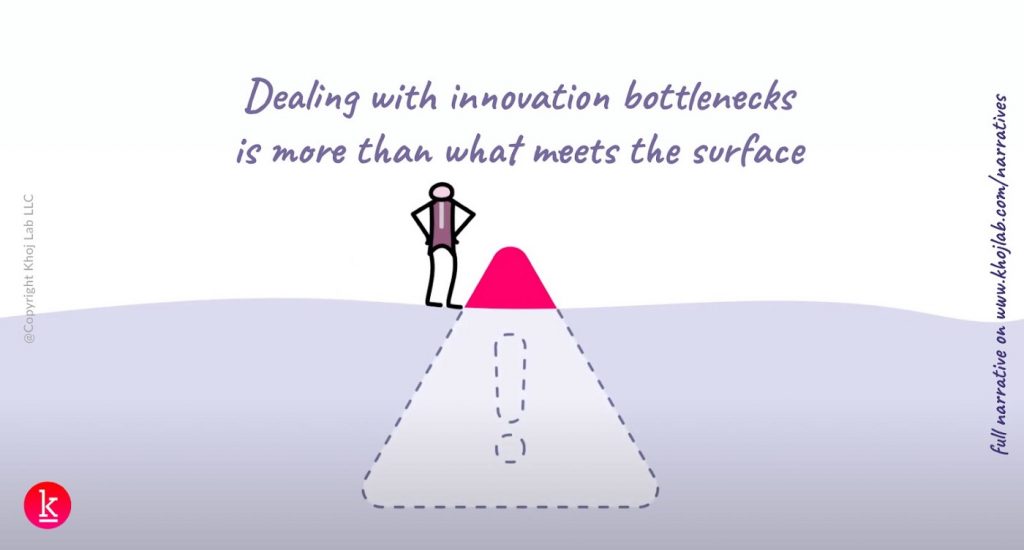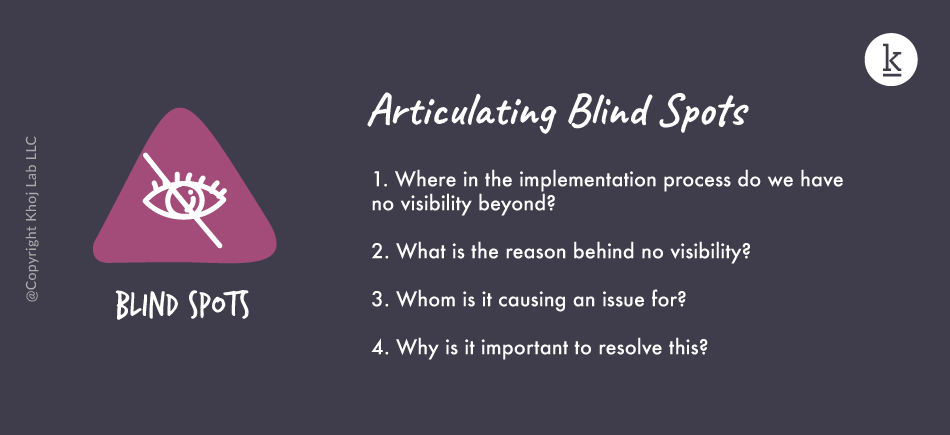
GUEST POST from Shilpi Kumar
In today’s context, innovation is a different beast altogether! To stay in the competition, organizations must innovate continuously, which means moving robust ideas through the innovation pipeline faster and more effectively while never losing sight of the context and needs of the customer.
Over the last 15 years, the acquisition of design agencies has undoubtedly accelerated the effort to push in-house innovation capabilities and promote innovation at scale. Organizations have been streamlining their innovation processes for over a decade using Lean Startup, Agile, and Design thinking. While these methods work, we often see new problems cropping up, only to slow down the process. What are these problems? How do they appear? And what do they look like? Even though design talent can be exceptional at imagining ideas for the future, organizations often overlook investing in skills that can effectively help navigate the flow of ideas through the innovation pipeline.
To fully understand this, let’s explore what it means to realize “innovation effectiveness” for your organization.
Innovation effectiveness refers to benefits an organization receives from its implementation of a given innovation (e.g., improvements in profitability, productivity, customer service, and employee morale).
Now, let’s simplify the path to innovation effectiveness in four steps,
First, Go beyond ‘Idea generation’ to ensure effective implementation of ideas.

For totally new ideas, it is natural for organizational workflows to be tricky to navigate. Despite having buy-in at the top leadership level, we find a lack of motivation from organizational managers to support the innovation. To top it off, multiple barriers in the implementation lead to “innovation bottlenecks — which turns out to be the most challenging part of innovation implementation.
“As designers, we are trained to think of the perfect design of the offering as the end of our journey; however, it is barely just the beginning of the journey.” — Tom Kelley, 2016
In 2015, IDEO’s Tim Brown and Roger Martin described this challenge and explained how the introduction of the solution and its integration into the status quo — is even more critical to its success than the solution itself and called it the design of the “intervention.”
Unfortunately, in 2022, organizations are still struggling in both aspects — incorporating a design-led approach to creating the artifact and orchestrating the design intervention that would ensure implementation effectiveness.
Second, Use implementation effectiveness to drive innovation effectiveness.

In a research paper published in 1996, “The challenge of innovation implementation, the author clearly defines innovation implementation as the process of getting targeted organizational members’ to understand, commit and adopt an innovation. Implementing assumes there is a buy-in from the organizational leaders and that employees within the organization will use the innovation consistently. And that is not the case.
Over the years, I have found that companies struggling to implement innovation face one of these issues. Either there is a misalignment between the innovation efforts and overall business strategy, causing a lack of buy-in, or the organization is missing an essential skill of building a convincing case and winning commitment from the people to maximize the potential benefits of the innovation to be realized.
This is where Implementation Effectiveness comes into play. For ideas to flow smoothly and consistently, we must create favorable conditions for innovation to thrive. This implies establishing policies and procedures to constantly inspire and influence the use of innovation by all employees.
To identify and resolve implementation barriers = paving the path for innovation effectiveness. Yet, these barriers are often ignored or temporarily put out.
Third, Identify implementation barriers that cause innovation bottlenecks.

During our engagements with global clients across various industries, we often find issues like redundancy in processes, loss in knowledge transfer between functions, and lack of cooperation. These are what we refer to as “innovation bottlenecks.”
We commonly hear leaders say, “Why can’t we be more collaborative?”, “Why is there such a disconnect between our teams?” or “Why can’t we make quicker progress?”, “Is there something wrong with the way we work?”
If you constantly see yourself returning to these questions, you need to identify these barriers and leverage the right mix of people from your organization to deal with them.
So, ask the critical question:
“How does our organization identify & resolve innovation bottlenecks that hinder the flow of ideas and impede innovation effectiveness?”

Most organizations that I have worked with typically face these three types of bottlenecks-
1. Bumps slow things down due to a lack of proper communication or delayed decision-making. By slowing down, organizations may lose their competitive advantage.

2. Barricades are like walls through which ideas can’t get to the next level. Due to improper judgment, lack of resources, or interest in the organization, ideas are put on hold or prematurely killed eventually.

3. Blind spots are the most insidious — unexpected, unpredictable moments nobody catches on time and doesn’t understand why or what is causing them. One function’s blind spot could be another one’s barricade.

Bottlenecks may vary based on an organization’s size and maturity level in the innovation adoption cycle. These barriers can form at any stage of the innovation pipeline and most commonly occur when the idea moves between functions.
Fourth, Deal with bottlenecks — Find the right talent to sustain implementation effectiveness from within your organization.

When dealing with innovation and all the ambiguity and uncertainty that comes with it — you’ll often find yourself trying different things until something works (brute force). If you plan to scale these innovation processes, you will soon run out of energy and resources this way! Scaling innovation requires us to systematize innovation within the organization. We need the talent for both, to develop innovative ideas and to ensure the implementation is effective. We like to call these people ‘innovation catalysts’ (Watch a short video that describes innovation bottlenecks www.khojlab.com/narratives).
Back in 2011, Roger Martin introduced the concept of innovation catalysts as design-thinking coaches. However, to solve today’s problems, organizations need “innovation catalysts” to expand their role to achieve implementation effectiveness by identifying and eliminating barriers within organizational workflows.
Innovation catalysts can be anyone who has been in the organization for a while — engineers, technologists, scientists, designers, researchers, or leaders, as long as they have the qualities that enables them to identify the bottlenecks and proactively deal with them strategically.
We should not use old methods and frameworks to solve brand new problems of today. New mindset lenses and tools are needed to resolve bottlenecks for innovation through implementation effectiveness. Organizations have gotten better at creating a capability to support their creative invention phase of design, sidelining the disciplined implementation phase in a way that can restrict the growth and scaling of innovation.
A special thanks to the people who inspired us to create this content in this article: Palak Shah, Jim Long, Anijo Mathew, Surabhi Gokhale, Nyurka Fernandes, Ashwin Chikerur, and Trisha Saxena.
Image credits: Khoji Lab, Pixabay
![]() Sign up here to get Human-Centered Change & Innovation Weekly delivered to your inbox every week.
Sign up here to get Human-Centered Change & Innovation Weekly delivered to your inbox every week.
